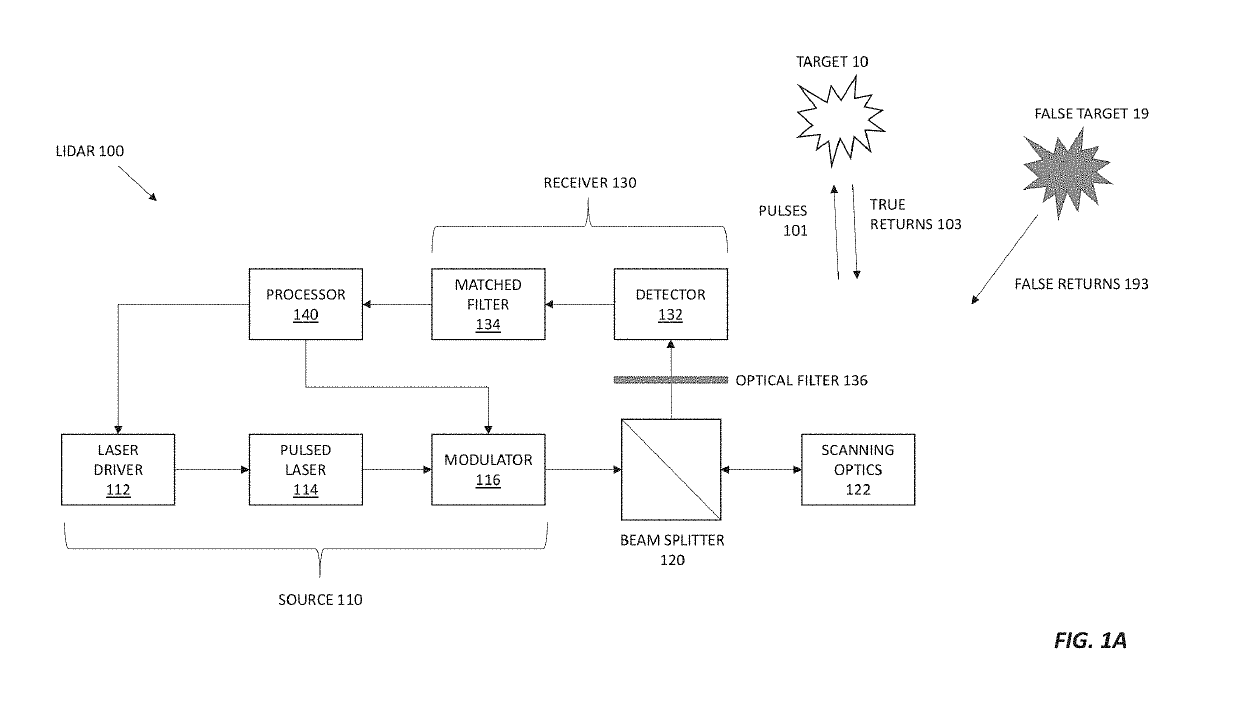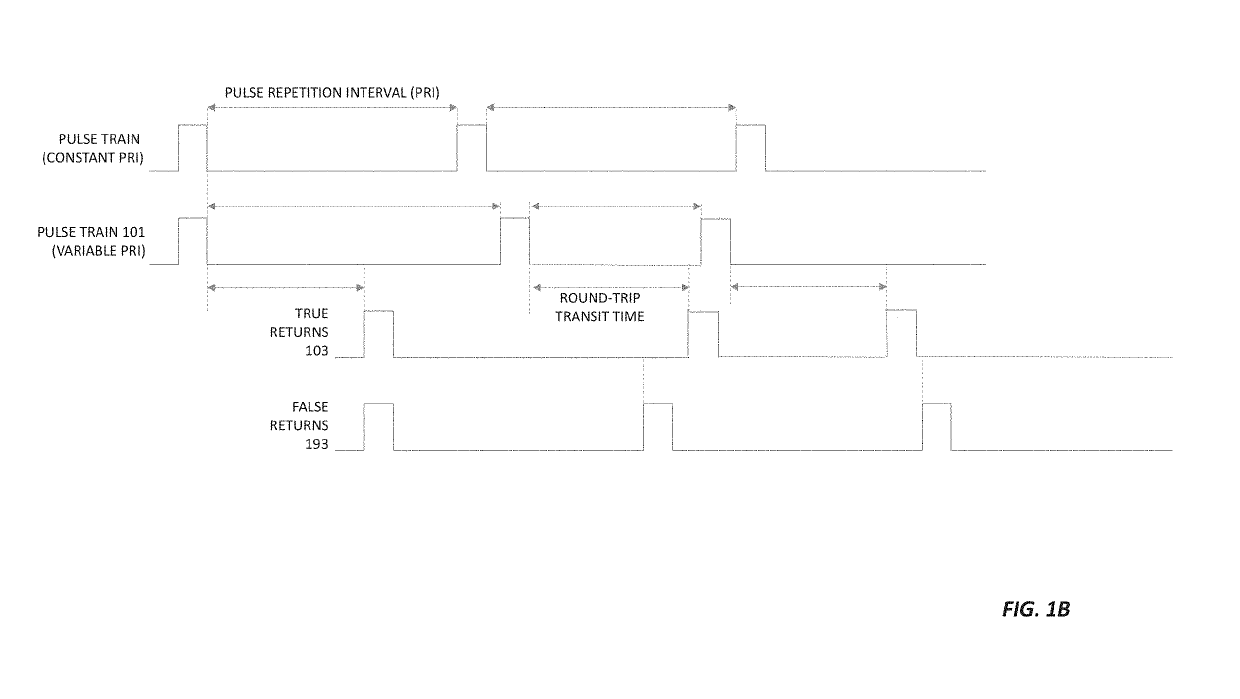Lidar resistant to interference and hacking
a technology of interference and lidar, applied in the field of lidar resistance to interference and hacking, can solve the problems of incoherent lidar receivers, lidar sensors that cannot be matched, and can be blinded both coherent and incoherent, so as to reduce the chance of interference and confuse the lidar sensor
- Summary
- Abstract
- Description
- Claims
- Application Information
AI Technical Summary
Benefits of technology
Problems solved by technology
Method used
Image
Examples
Embodiment Construction
1 Modulating a Lidar Source to Mitigate Interference and Jamming
[0015]Modulating the optical source of a lidar with a unique modulation or encoding can make the lidar more resistant to interference, jamming and hacking. The processor in the lidar receiver looks for that unique modulation or encoding. If the modulation is present, the return signal is considered genuine. If the modulation is not present, it is deemed fake.
[0016]The effectiveness of this scheme depends on a modulation that is not easily copied and that is relatively unique. The scheme also depends on a processor that can distinguish or discriminate between what is real and fake. For example, the processor may have a match filter to lock on to the desired modulation.
[0017]The lidar source can be modulated in many different ways. If the lidar is a pulsed lidar, the pulse repetition frequency (or equivalently, pulse repetition interval or time between pulses) or relative optical phase between pulses may be modulated on a...
PUM
 Login to View More
Login to View More Abstract
Description
Claims
Application Information
 Login to View More
Login to View More - R&D
- Intellectual Property
- Life Sciences
- Materials
- Tech Scout
- Unparalleled Data Quality
- Higher Quality Content
- 60% Fewer Hallucinations
Browse by: Latest US Patents, China's latest patents, Technical Efficacy Thesaurus, Application Domain, Technology Topic, Popular Technical Reports.
© 2025 PatSnap. All rights reserved.Legal|Privacy policy|Modern Slavery Act Transparency Statement|Sitemap|About US| Contact US: help@patsnap.com



